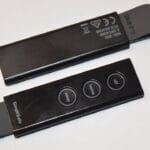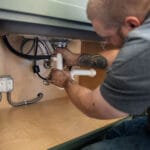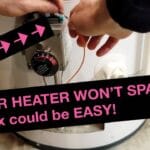Are you trying to decide between spray and brush methods for sealing your driveway? This decision might seem minor, but it can significantly impact the longevity and appearance of your driveway.
Your home deserves a driveway that not only looks pristine but also stands the test of time. The method you choose can affect how well your driveway withstands the elements and daily wear and tear. In this guide, we’ll break down the pros and cons of driveway sealcoating with a spray versus a brush.
By the end, you’ll have all the insights you need to make an informed choice that suits your needs and gives your home the curb appeal it deserves. Ready to dive in and discover which method is right for you? Let’s get started!
Sealcoating Basics
Sealcoating is vital for maintaining your driveway. It protects against wear and tear. Regular sealcoating extends the life of your pavement. It also enhances curb appeal. Sealcoating fills small cracks and prevents water damage. This process is crucial for every driveway owner.
Purpose Of Sealcoating
Sealcoating forms a protective barrier on your driveway. It shields the surface from harmful elements. Sun, rain, and snow can cause damage over time. Sealcoating helps prevent these issues. It also reduces the need for frequent repairs. This saves time and money in the long run.
Types Of Sealcoating Materials
There are several types of sealcoating materials. Asphalt emulsion is common. It is eco-friendly and easy to apply. Coal tar sealer is another option. It offers excellent protection but has a strong odor. Acrylic sealer provides a glossy finish. Each type has its pros and cons. Choose based on your needs and preferences.
Spray Method
The spray method for driveway sealcoating offers a modern approach. It is efficient and widely used. Many prefer it for its speed and uniform finish.
Application Process
Professionals use spray equipment to apply sealant evenly. They cover large areas quickly. The process starts with cleaning the driveway. Dirt and debris are removed. Next, the sealant is mixed to ensure consistency. The sprayer is then used to coat the surface uniformly. This ensures every inch gets covered.
Advantages
Spray method saves time. It covers the driveway faster. The finish is smooth and even. It reduces the risk of streaks. Uniform coverage protects the surface better. It can reach edges and corners easily. This method is ideal for large driveways.
Disadvantages
Spray method may require professional equipment. It can be costly for small areas. Overspray can affect nearby surfaces. Windy conditions may impact application. More sealant is used compared to brushing. It’s less precise for intricate designs.
Brush Method
Choosing between spray and brush methods for driveway sealcoating can affect durability and appearance. The brush method ensures a thicker application, filling small cracks effectively, while spray offers a smoother finish. Each method has its advantages, depending on specific driveway conditions and desired outcomes.
When it comes to driveway maintenance, the brush method of sealcoating offers a classic, hands-on approach that many homeowners find appealing. This method involves using a brush or squeegee to apply the sealant directly onto the driveway surface. It’s a technique that allows for precision and control, and it can be quite satisfying to see the transformation of your driveway unfold under your guidance.Application Process
Applying sealant with a brush is straightforward but requires patience and attention to detail. First, you need to clean your driveway thoroughly to ensure the sealant adheres properly. Once the surface is prepped, you pour a small amount of sealant onto the driveway and spread it evenly using a brush or squeegee. The key is to work in small sections to maintain control and ensure even coverage. Make sure to overlap each stroke slightly to avoid leaving gaps. It’s a time-consuming process, but it allows you to target specific areas with precision.Advantages
One of the main benefits of the brush method is control. You can apply the sealant exactly where it’s needed, which is particularly helpful for driveways with cracks or uneven surfaces. This method also tends to apply a thicker coat of sealant, which can provide better protection. Additionally, many homeowners find the process therapeutic, akin to painting a canvas. It’s an opportunity to engage with your home maintenance directly and see immediate results.Disadvantages
While the brush method has its perks, it also comes with some drawbacks. It is labor-intensive and time-consuming, making it less ideal for large driveways. The physical effort required can be demanding, especially under the sun. There’s also the risk of uneven application if you’re not careful, which can lead to unsightly streaks. Plus, the thickness of the application can sometimes lead to longer drying times. Have you ever tried sealcoating your driveway with a brush? If so, you know it’s both a rewarding and challenging task. But the personalized touch you achieve might just make it worth the effort.
Credit: asphaltindustrial.com
Comparative Analysis
When it comes to maintaining your driveway, sealcoating can be a game-changer. But should you opt for a spray or brush application? Understanding the nuances of each method can guide you in making a choice that best suits your needs. This comparative analysis delves into the specifics, focusing on cost, time efficiency, and durability. Let’s explore these factors in detail.
Cost Considerations
Price is often the first concern. Spray application might initially seem expensive due to the equipment involved. However, it covers large areas quickly, potentially saving on labor costs.
On the other hand, brush application is more affordable in terms of materials. But it can be labor-intensive, especially for large driveways, which might increase overall costs.
Think about your budget and the size of your driveway. Is a higher upfront cost worth the potential savings in time and labor?
Time Efficiency
If you’re short on time, spraying could be your best bet. It’s a swift process, covering expansive surfaces in minutes.
Brush application demands patience. Applying sealcoat manually means spending hours on what spraying completes in a fraction of the time.
Consider how much time you can allocate. Is the extra time spent brushing worth the meticulous finish?
Durability And Finish
Spray applications offer a smooth finish, ideal for driveways needing a quick facelift. However, they might require more frequent touch-ups.
Brush applications, with their thicker coat, tend to provide a more durable finish. This could mean fewer applications over time, saving you effort in the long run.
Reflect on your driveway’s condition. Does it need a robust seal or just a cosmetic refresh?
In choosing between spray and brush, weigh these factors against your personal preferences. Is speed your priority, or do you value a hands-on approach? Each method has its merits, but your specific needs will point the way to the best choice. What suits your driveway best?
Best Situations For Each Method
Choosing the right sealcoating method for your driveway is crucial. The method you select depends on specific situations and needs. Some situations call for a sealcoating spray, while others benefit from using a brush. Understanding these can help you make an informed decision.
Residential Driveways
For many residential driveways, a brush application is ideal. It allows for more control and precision. This method ensures the sealant reaches every corner and crack. Homeowners with smaller driveways often prefer this method. It provides a thicker coat, offering more protection.
Spray sealcoating suits larger residential driveways. It’s faster and covers more surface area quickly. This method is also less labor-intensive. For homeowners with time constraints, spraying is a practical choice. It provides a smooth, even finish.
Commercial Properties
Commercial properties usually require a different approach. Spray sealcoating is often the go-to method. It allows for quick application over vast areas. Businesses can’t afford long downtime. Spray application reduces closure time significantly.
In some commercial settings, a brush application is beneficial. This is true for areas needing extra attention. For instance, high-traffic zones might need a thicker coat. Brushes can apply more sealant to these critical areas.
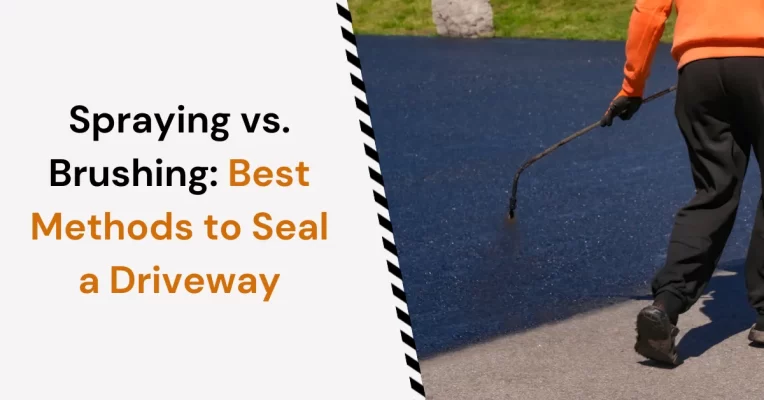
Credit: asphaltsealing.ca
Tips For Sealcoating Success
Achieving a flawless sealcoat finish requires attention and care. Whether you choose spray or brush, both methods need preparation. Proper technique ensures your driveway looks great and lasts longer. Let’s explore some key tips for sealcoating success.
Preparation Steps
Start by cleaning the driveway thoroughly. Remove all dirt, debris, and oil stains. Use a pressure washer for stubborn spots. Patch any cracks or holes with a suitable filler. Allow it to dry completely. This ensures a smooth and even application. Choose a dry day with temperatures above 50°F. Check the weather forecast to avoid rain.
Common Mistakes To Avoid
Avoid applying sealcoat on a wet surface. It won’t adhere properly. Don’t skip the cleaning step. Dirt can cause peeling and uneven coverage. Over-applying the sealcoat leads to cracking. Use the right amount for a smooth finish. Ensure the sealant is mixed well before application. This prevents clumping and streaking.
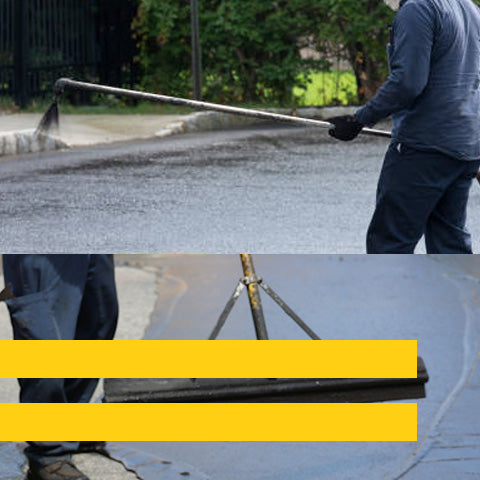
Credit: asphaltindustrial.com
Frequently Asked Questions
What Is Driveway Sealcoating?
Driveway sealcoating is a protective layer. It shields against weather, oil, and wear. Helps prolong driveway life.
How Does Spray Sealcoating Work?
Spray sealcoating uses a machine. Sprays an even layer of sealant. Quick and covers large areas.
Is Brush Sealcoating More Effective?
Brush sealcoating provides a thicker layer. Better for detailed areas and cracks. Takes more time than spraying.
Which Method Is Cheaper, Spray Or Brush?
Spraying is generally cheaper. Requires less labor and time. Ideal for large areas.
Does Sealcoating Improve Driveway Appearance?
Yes, it does. Restores color. Makes driveway look new. Increases curb appeal.
Conclusion
Choosing between spray and brush sealcoating depends on your needs. Spray application covers large areas fast. Ideal for big driveways. Brush sealcoating provides more control. Better for detailed work or small areas. Both methods protect and extend driveway life. Costs and time vary with each method.
Consider your budget and schedule. Also, think about the look you want. Both options have pros and cons. So, weigh them carefully. Your choice will impact the driveway’s appearance and durability. Make sure it fits your specific requirements.


